Figures & data
Table 1. List of acronyms of models, satellites, and instruments.
Fig. 1 Typical spatiotemporal scales of some examples of weather and climate phenomena. The numerical weather prediction model (NWP), general circulation model (GCM), and global cloud resolving model (GCRM) cover different but partially overlapping scales.
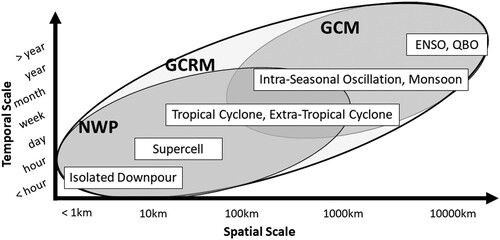
Fig. 2 Cloud images calculated by the GCRMs in the DYAMOND project and from the geostationary satellite Himawari-8 (After in Stevens et al., Citation2019). From left to right: IFS with a horizontal resolution of 4, 9 km, and NICAM (top row); ARPEGE-NH, Himawari-8, and ICON (second row); FV3, GEOS5, and UM (third row); and SAM and MPAS (bottom row).
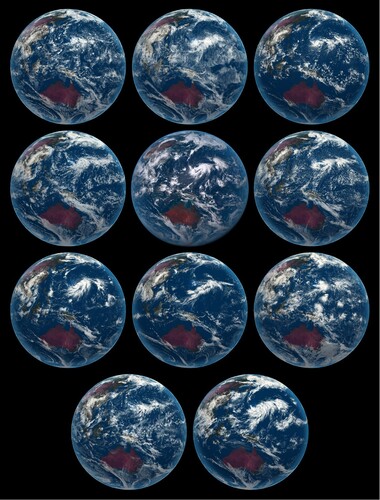
Table 2. List of GCRMs. Short names and references to the model-frameworks and recent settings are summarized. Cloud microphysics schemes in the DYAMOND GCRMs refer to the schemes used for the DYAMOND project. The subscripts v, c, r, i, s, and g indicate vapor, cloud water, rain, cloud ice, snow, and graupel categories, respectively.
Fig. 3 Cloud images calculated by the NICAM with horizontal resolutions of 14, 3.5 and 0.87 km (after Kajikawa et al., Citation2016). Zoom images of a tropical cyclone are shown in the right column.
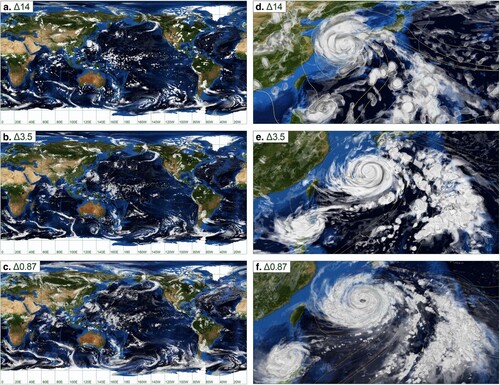
Fig. 4 A schematic image of the comparison between models and satellites using satellite simulators. From Masunaga et al. (Citation2010), © American Meteorological Society. Used with permission.
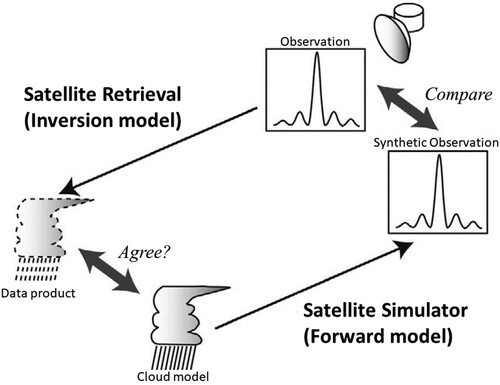
Fig. 5 Sample images of (a) the default NICAM with the global quasi-uniform icosahedral grid system, (b) stretched NICAM, and (c) diamond NICAM (after Uchida et al., Citation2017, © American Meteorological Society. Used with permission.).
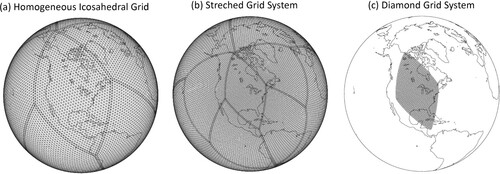
Fig. 6 Comparison of the vertical profiles of annual mean ice water content (IWC) [mg m-3] from (a) CloudSat satellite observations [2B-CWC-RO product (Austin et al., Citation2009; Austin & Stephens, Citation2001)], (b) NSW6 in NICAM.12, (c) NSW6 in NICAM.16, and NDW6 in NICAM.16. The solid lines represent 273-K isotherms. The global simulation data with horizontal resolution of 14 km and 38 vertical layers were provided by courtesy of C. Kodama and A. T. Noda.
![Fig. 6 Comparison of the vertical profiles of annual mean ice water content (IWC) [mg m-3] from (a) CloudSat satellite observations [2B-CWC-RO product (Austin et al., Citation2009; Austin & Stephens, Citation2001)], (b) NSW6 in NICAM.12, (c) NSW6 in NICAM.16, and NDW6 in NICAM.16. The solid lines represent 273-K isotherms. The global simulation data with horizontal resolution of 14 km and 38 vertical layers were provided by courtesy of C. Kodama and A. T. Noda.](/cms/asset/df848e83-151e-4ada-8c2a-4b743157dd7a/tato_a_2075310_f0006_ob.jpg)
Fig. 7 Comparison of outgoing longwave radiation at the top of the atmosphere (OLR) from CERES satellite observations (solid lines with points) and NICAM simulations with various versions of NDW6 (solid lines) (after Satoh et al., Citation2018).

Fig. 8 The vertical profiles of (a) downward shortwave radiation and (b) upward shortwave radiation (after Seiki et al., Citation2014). Thick lines indicate observations by radiometer sonde, thin solid lines indicate NICAM simulations using NDW6 with spherical SSPs, and thin dashed lines indicate NICAM simulations using NDW6 with nonspherical SSPs. The dashed rectangles indicate the location of a cirrus layer.
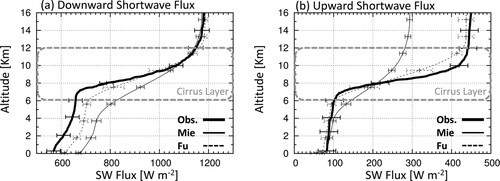
Fig. 9 Comparison of (a) OLR and (b) outgoing shortwave radiation at the top of the atmosphere (OSR) from CERES satellite observations (solid lines) and NICAM.16 simulations with various settings of cloud and radiation coupling. NSW6 uses full coupling between cloud and radiation (dashed lines), NSW6-Mie assumes variable effective radii but spherical SSPs (long dashed short dashed lines), and NSW6-Mie-ReFIX assumes constant effective radii and spherical SSPs (dotted lines). The global simulation data were provided by courtesy of C. Kodama.

Fig. 10 Cloud microphysical processes and cloud interaction among water classes (after Satoh et al., Citation2018). Solid lines indicate the processes that change the number and mass concentration of hydrometeors, while dashed lines indicate the processes that change only the mass concentration of hydrometeors. Hom/het indicates homogeneous/heterogeneous, respectively.
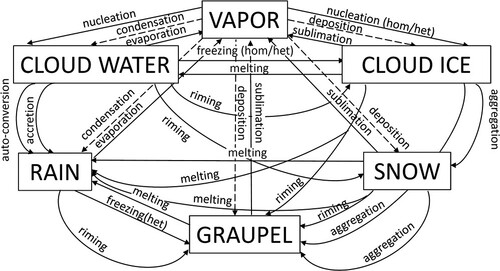
Table 3. Dependences of cloud-related processes on bulk cloud microphysical parameters.
Table 4. Optical sensors and corresponding sensitive physical parameters.
Fig. 11 Breakdown of OLR change under global warming simulated by the NICAM (after Noda et al., Citation2016). An OLR change ΔF is attributed to a change in emissivity Δε, a change in cloud-top temperature ΔTCT, and a change in clear sky radiation ΔFCLR. The breakdown was calculated by cloud size. Sum shows the summation of the contributions and the difference between ΔF and Sum indicates the error of the analysis.

Fig. 12 The cloud-top and rain-top diagram using Ku-band radar echo and infrared brightness temperature from (a) satellite observations, (c) NSW6 in NICAM.12, and (e) NSW6 in NICAM.16. CFAD using Ku-band radar echo from (b) satellite observations, (d) NSW6 in NICAM.12, and (f) NSW6 in NICAM.16. Here, simulated results were processed by a Joint-Simulator. From Roh et al. (Citation2017), © American Meteorological Society. Used with permission.
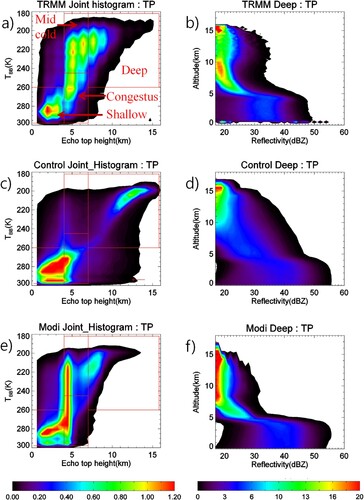
Fig. 13 Joint probability density function of the depolarization ratio δ and the ratio of attenuated backscattering coefficients for successive layers x from (a) satellite observations, (b) NSW6 in NICAM.16, and (c) NDW6. Low-level clouds behind a frontal cloud system were sampled over the Southern Ocean. Signals of supercooled liquid water are highlighted by circles. From Roh et al. (Citation2020), © American Meteorological Society. Used with permission.
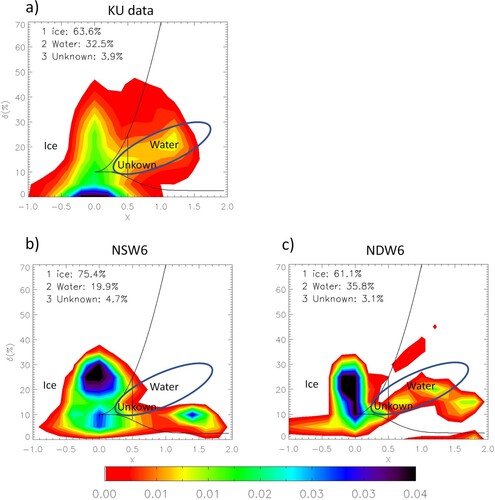
Fig. 14 Observation geometry of the EarthCARE satellite (from https://www.eorc.jaxa.jp/EARTHCARE/museum/poster_gallary.html, ©JAXA).
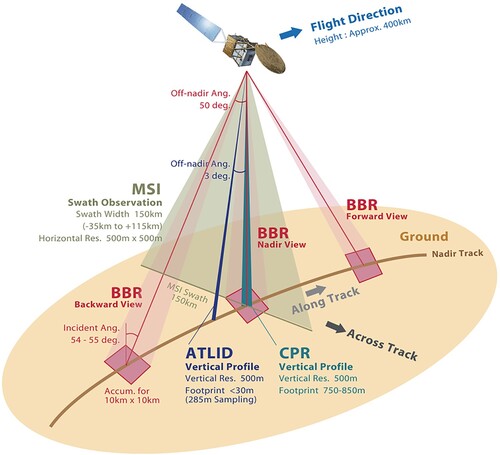
Fig. 15 Overview of the ground observations used in the ULTIMATE project around the Tokyo metropolitan area.

